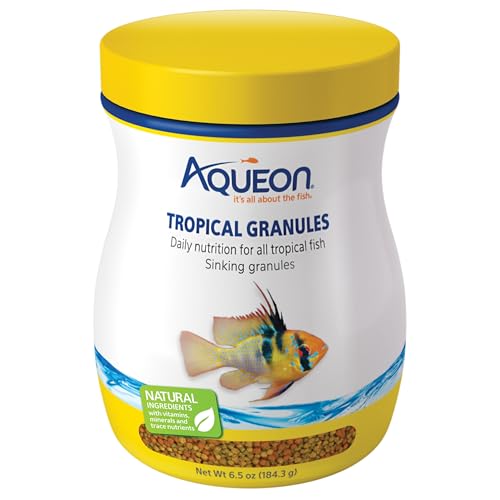The Neon Tetra is a beautiful freshwater fish. They come in vibrant blue shades, adding glamor to your aquarium. Knowing how much food and what type is best for your Neon Tetras is essential, as an improper feeding schedule might harm them.
Knowing your Neon Tetras helps you determine feeding frequency and ensure optimal health. Here’s everything you’ve ever wanted to know about feeding your Neon Tetras.
Table of Contents
What Are Neon Tetras?
The Tetra is a freshwater fish native to Brazil, Peru, and Colombia. The vertical color stripes on these fish differ, with red being one of the most prevalent. The color of their dorsal surface is often blue-black Neon Tetra with a silvery belly.
Tetras’ red stripes and blue sides turn silver when they sleep—amazing! This usually happens at night, so don’t panic; it’s your aquarium mates taking a nap. Another of their needs is to be social, so ensure you have a large enough tank to let your Tetras school. Males and females look very similar but reach around 2 inches long when mature.
Now you’ve met the Neon Tetra, let’s look at how you can feed them and how often to feed them.
How to Feed Neon Tetras?
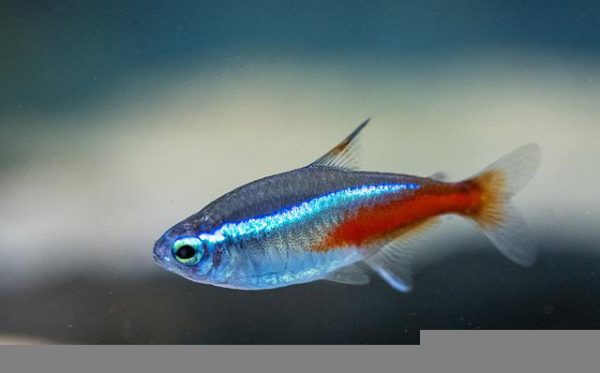
There are several steps to follow when feeding your Neon Tetra. It may seem easy, but you must be careful when feeding them. These are the golden steps for successful feeding:
Step 1: Adding Food to the Tank
Add food to the tank in small quantities (a pinch at a time). Never scatter large volumes of food in the tank. Mornings are ideal for feeding, but you will likely feed in the late afternoon or early evening, too.
Record how many pinches (or grams, if you’re pretty sciency) of food you add to the tank each time. Never add more food than they need.
Step 2: Watch Your Neon Tetras Feeding
Don’t just add food and leave. Stay and observe your tetras feeding. Feeding time is an excellent opportunity to check the Neon Tetras for signs of Ick, bloat, and injuries. You can also check for bullying if you keep a community tank.
So start by sprinkling the feed onto the water surface. If you have a densely planted tank, using a floating feeding area is a good idea.
As long as the fish feed, you can add a small pinch until the fish start to swim away. Never keep feeding when they have lost interest, as the food will sink and rot at the bottom of the tank.
Neon Tetras can’t eat food off the bottom of the fish tank, so never feed a fast sinking food. The best and most effective way to feed them is to use small pinches of food that you add until the fish are no longer hungry and asking at the surface. There should be no food left when your Tetras are no longer feeding.
Step 3: Feeding Your Neon Tetras at Night
Feeding your Neon Tetras at night is extremely important. Tetras can’t survive with only one feeding per day, so a nighttime feed is equally vital to ensure they have enough nutrition. Use the same feeding steps as above, and don’t overfeed your Tetras.
How Much Food Does a Neon Tetra Need?
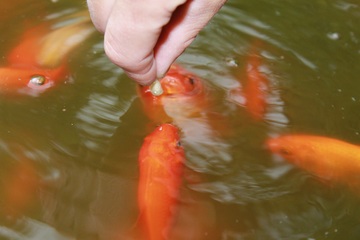
The Neon Tetras are known to be opportunistic feeders in their natural habitat. However, your Neons rely on you in a tank for all their food requirements. You have to provide enough to ensure your Neon Tetras aren’t hungry, which you can see when they no longer swim vigorously around the feeding area.
As a rule, your Tetras should have finished eating in less than two minutes. If they are still gobbling after two minutes, they are overeating and may develop bloat. To prevent this, feed small meals two to four times per day.
Once your Neon Tetras have lost interest in the food, scoop out any excess food floating about with a small tank net. Rotting food becomes stale and will lead to gas and indigestion, clouding your tank water.
How Long Can Neon Tetras Go Without Food?
You might have wondered how long can your Neon Tetra go without food. This is a common concern for all Neon Tetra owners when planning a holiday or anticipating an unexpected trip.
The most important thing to remember is that your filters aren’t up to par when you don’t have any live plants. So, a planted tank offers a better habitat for Neon Tetras to live without care, as they will receive oxygen and food from the plants.
In a large enough tank with live plants, your Neon Tetras can survive up to three weeks without additional feeding, though you’d never want to simply leave them unattended for so long. On average, a week without feeding is more acceptable.
It’s best to use an automated feeder to keep your Neon Tetras healthily fed in your absence for longer periods. Ensuring your filters and aerating pump work continuously in your absence is vital to keep the water parameters in check.
Avoid sudden changes before you leave, but thoroughly siphon any rotting plant and food material to manage the buildup of harmful bacteria. While your Neon Tetras can survive by grazing on aquatic plants, never overplant the tank, so there isn’t enough room for the Tetras to school.
To ensure your Neon Tetras survive, you must keep your plants alive. Low-maintenance plants like Java Fern and Anubias will need sunshine or LED lights for a minimum of 5 hours up to 8-10 hours daily to keep growing and stay healthy.
If the thought of leaving your Neon Tetras alone makes you anxious, invest in an automatic feeder and a tank management system, or ask a good friend to keep an eye in your absence.
How Do You Know If Neon Tetras Are Hungry?
Neon Tetras, like all other creatures, require food to live. They need nutrients, proteins, vitamins, and carbohydrates. Because the Tetras in your home aquarium are restricted to a small area, they rely on what food you offer them, so you must feed them enough to survive.
So, how can you tell whether your Neon Tetra is hungry?
The most common signs are as follows:
- You see your Neon Tetras hunting for food in the substrate, which is odd as Neons don’t typically swim to the bottom of a tank. When your Neon Tetras start filtering the substrate, they are hungry.
- If your Neon Tetra seems sluggish or lethargic and seem leaner than usual, it could mean they’ve lost weight because you haven’t fed it enough for a long time.
- Your Neon Tetras may be hungry if they float near the top of the tank where you usually feed them.
- Hunger might also manifest in sudden behavioral changes such as aggression and fin biting.
- Hunger is indicated by significant weight/size variations in Neon Tetras from the same hatching.
If you notice any of these signs, you’ve got hungry Neon Tetras, and it is time for you to feed them!
You may also be interested in:
Can You Overfeed Tetras?
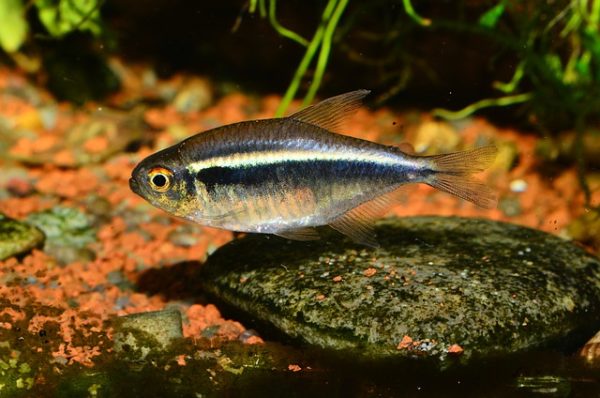
The consequences of overfeeding your Neon Tetras may not be immediately apparent. While you may fear your fish exploding in a sci-fi movie horror moment, this is not likely to happen. However, overfeeding can lead to many health issues.
Neon Tetras are known to suffer from fatty liver disease, which results from overfeeding. When you overfeed your fish, you place a strain on their digestive systems, increase the waste load in your tank, and strain your system’s filtration capacities.
Ammonia, nitrite, and nitrate produced by uneaten food and rotting fish waste might be detrimental to your pet. If you accidentally overfeed, use a siphon or a net to remove the food scraps as soon as possible to avoid changing your tank water’s biochemistry.
Nitrite and ammonia concentrations can rise, while oxygen and pH levels can be dangerously low. These chemical by-products can turn water cloudy, cause a bloom in algae growth, or promote mold or planaria to spread uncontrollably.
Food Routine for Neon Tetras
Diet for Young Tetras vs. Diet for Adult Neon Tetras
Young Tetras eat animal and plant material since they are omnivores. Infusoria and green water (algae-rich water) are great plant foods for young tetras shortly after birth. This is because they consume minuscule-sized foodstuffs at that time.
Later, you can feed live brine prawns, frozen bloodworms, freeze-dried daphnia, and commercialized flake food (in the smallest size) to larger immature Neon Tetras. Young Tetras are omnivores, requiring protein and fat in their diet to help develop robust bodies. You can also feed young Tetras egg yolk because it contains proteins, fats, cholesterol, and other beneficial nutrients. However, egg yolk should only be fed occasionally as a treat.
Feed adult Neon Tetras high-quality fish flakes enriched with minerals and vitamins. Feed Neon Tetras fresh or frozen foods like bloodworms, daphnia, tube fish, and brine shrimp several times a week. Cut it into smaller bits to prevent your Neon Tetras from struggling to swallow larger foods.
Ensure that your Neon Tetras are eating enough plant foods, too. They should be fed algae wafers, grapes, cucumbers, and strawberries two to three times every week.
Neon Tetra Food
What they can eat?
Ensuring that you feed your Neon Tetras nutritious and mineral-rich food is crucial. They can eat the following food:
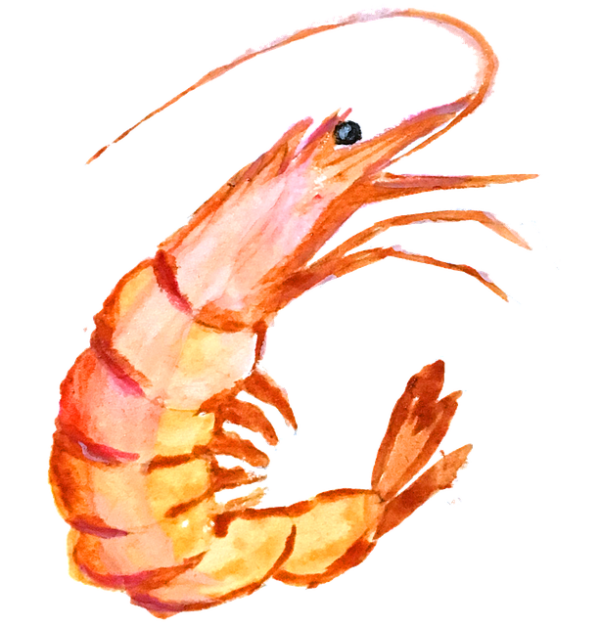
- Shrimp in brine
- Earthworm
- Maggots
- Daphnia
- Frosted bloodworms
- Fish Flakes
- Tubifex Worms
- Mysis Shrimp
- Cucumbers
- Brocolli
- Carrots
- Potato
- Cabbage
- Corn
- Lettuce
- Grapes
- Strawberries
- Chicken
- Fish
- Egg Yolk
- Beef
What Can’t Neon Tetras Eat?
Just like there are foods your Neon Tetras can eat, there are foods your Neon Tetras cannot eat. Some food sources can be highly toxic for your Neon Tetras. Consuming these foods can be dangerous and affect their health. They cannot eat the following food:
- Bread
- Oranges
- Their excretions
- Large chunks of food
Some of the Best Suggested Food for Your Neon Tetras
Well, now that you know what to feed your Neon Tetras, where can you buy these kinds of food? Read on! Because we have a list of top-quality food, you can feed your Neon Tetras. These are perfect commercial food options:
1. Tetra Tropical XL Color Granules
Larger Neon Tetra thrive on the Tetra Tropical color-enhancing granules. These granules are slow-sinking, so your Tetras can gobble them up without swimming to the bottom. Feeding this fish food helps improve your Neon Tetras’ coloration for more vivid dorsal stripes and improved immunity thanks to the procare formula of this food.
With a high protein content of 47.5%, this food is ideal for growing Tetras and mature Tetras that consume large volumes of protein to provide dense energy. Best of all, the slow-sinking granules are eaten before they can rot at the bottom of the tank’s substrate, which leads to clear water and a healthier tank.
Features
- Different granule sizes available
- Ideal food for tropical fish like Neon Tetras
- Procare formula contains prebiotics to help boost immunity
- Fish food is rich in protein and fat for best fish nutrition
- Contains color-enhancing vitamins and minerals
- Affordably priced
2. Hikari Tropical Semi-Floating Micro-Granules
Try Hikari tropical micro-granules that offer the best plant and animal protein for your Neon Tetras for a scientifically researched meal. The granules are semi-floating, meaning they slowly descend below the surface, taking quite some time to reach the substrate. This allows the mid-level fish to easily consume the granules before these pass to the tank floor.
The granules are fortified with spirulina and krill meal, which contribute to a vivid coloration of all tropical fish, and your Neon Tetras will gain a luminous coloration. With 43% protein, your fish will benefit immensely from this feed.
Help boost your fish’s immunity and fight off diseases with the vitamins and minerals needed for healthy digestion and immunity. Different-sized bags are available, which allows you to quickly try out the food before committing to a bigger bag.
Features
- Micro-coating helps maintain water clarity by stopping the food from dissolving
- Slow-sinking and with extra buoyancy, which means the granules float until eaten
- Enriched with vitamins and minerals for a significant immunity boost
- Available in different size bags, depending on how many Tetras you have
- Ideal coloration of fish due to the spirulina and krill
- Somewhat more expensive than other options
3. Ultra Fresh Tetra Fish Food
Feeding your Neon Tetras Ultra Fresh Tetra food helps your Tetras to be healthy and lively. These pellets are available in two different size packets, from 1.87 ounces to 4.6 ounces. Stick to a more natural diet with these pellets made from mostly fish protein in the form of fish meal.
Thanks to this pelleted food’s range of vitamins, minerals, and fats, your Neon Tetras will receive a great boost of B vitamins, vitamin A, and D3. The micro pellets are slow-sinking, so your Tetras can nip them up as they slowly descend. Also, the pellets won’t dissolve for 24 hours, so your tank water will remain pristine.
Adding probiotics helps dissolve fish excrement, so this is a fish food that helps clean your tank as your fish poop—no more cloudy or murky tank water.
Features
- Made from up to 40% wild sword prawns for a total animal protein value of 60%
- The ideal ratio of 9:1 meat to vegetables for healthy fish
- Most natural protein sources, which appeal to picky fish
- With spirulina and garlic, the pellets help improve your Neon Tetras’ immunity
- Small granule size at 0.6 mm, making it ideal for smaller Tetras
- Reasonably priced
4. GloFish Special Flake Dry Fish Food for Brightness
If your Neon Tetras are picky and don’t like feasting on granules or pellets, this highly nutritious flake fish food is ideal. The food is highly recommended for tropical fish, including Neon Tetras. While Tetras don’t like spending too much time at the surface to feed, the flakes quickly soften and sink, reaching mid-tank level, where your Tetras can quickly gobble them up.
The proprietary formula helps increase color brightness, while the omega acids and a wide range of vitamins and minerals ensure your Tetras remain healthy and grow optimally.
The flakes come in four colors for a visual treat when feeding, as you can watch your Neon Tetras feast on the colorful flakes as they sink.
Features
- Contains 42% protein
- Rich in 10% fat
- Enriched with many vitamin and mineral sources
- Immune boosting with vitamin C and yeast extract
- Only available in one size, but very affordably priced
5. Aqueon Tropical Granules 6.5 Ounces
Aqueon is a name to reckon with in aquatic matters, and their granule food is real value for money. The granules come in two different size containers, and the unique bottle shape allows for easy dispensing without getting your hands all fishy.
The granules are made with all-natural ingredients; even the colors used to make the bright yellow, green, and red granules are sourced from safe natural sources. Your Neon Tetras are in good hands with this tasty meal, and since the granules are enriched with vitamins and minerals (also from natural sources), your Tetras are sure to glow with color and vitality.
The food is formulated to prevent water clouding and ensure less fish waste.
Features
- All natural ingredients include fish meal, squid meal, shrimp meal, and fish oil for improved protein and fat content
- With 41% protein, Neon Tetras will grow optimally
- The 7% fat content helps with vitamin absorption and energy production
- Available in two container sizes, 3.25 ounces and a 6.5-ounce bottle
- Very affordably priced
FAQ
Neon Tetras are omnivores while Bettas are carnivores. Hence, you can feed Betta foods to your Neon Tetras, but Bettas can’t eat the food designed for Neon Tetras. For best results, feed high-quality tropical fish flakes to your Neon Tetras.
Yes, you can give your Tetras homemade food. In addition to brine shrimp, microworms, seafood, chicken, vegetables, egg yolk, and daphnia, homemade food can cater to all your Neon Tetras’ needs.
Also Read: How to Tell if a Turtle is Dead Or Hibernating?
Conclusion
Your Neon Tetras will be happy and flourish in your aquarium if you feed them according to the instructions and suggestions mentioned in this guide. When it’s time to feed your Tetras, select high-quality food appropriate to your fish species.
Neon Tetras are simple to maintain. However, if your current feeding schedule isn’t producing full-bodied and brightly colored Tetras, try changing what you feed and when.





